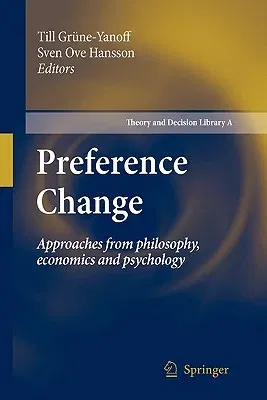Changing preferencesis a phenomenonoften invoked but rarely
properlyaccounted for. Throughout the history of the social sciences,
researchers have come against the possibility that their subjects'
preferenceswere affected by the phenomenato be explainedor by
otherfactorsnot taken into accountin the explanation.Sporadically,
attempts have been made to systematically investigate these in uences,
but none of these seems to have had a lasting impact. Today we are still
not much further with respect to preference change than we were at the
middle of the last century. This anthology hopes to provide a new
impulse for research into this important subject. In particular, we have
chosen two routes to amplify this impulse. First, we stress the use of
modellingtechniquesfamiliar from economicsand decision theory. Instead
of constructing complex, all-encompassing theories of preference change,
the authors of this volume start with very simple, formal accounts of
some possible and hopefully plausible mechanism of preference change.
Eventually, these models may nd their way into larger, empirically
adequate theories, but at this stage, we think that the most
importantwork lies in building structure.Secondly, we stress the
importance of interdisciplinary exchange. Only by drawing together
experts from different elds can the complex empirical and theoretical
issues in the modelling of preference change be adequately investigated.


